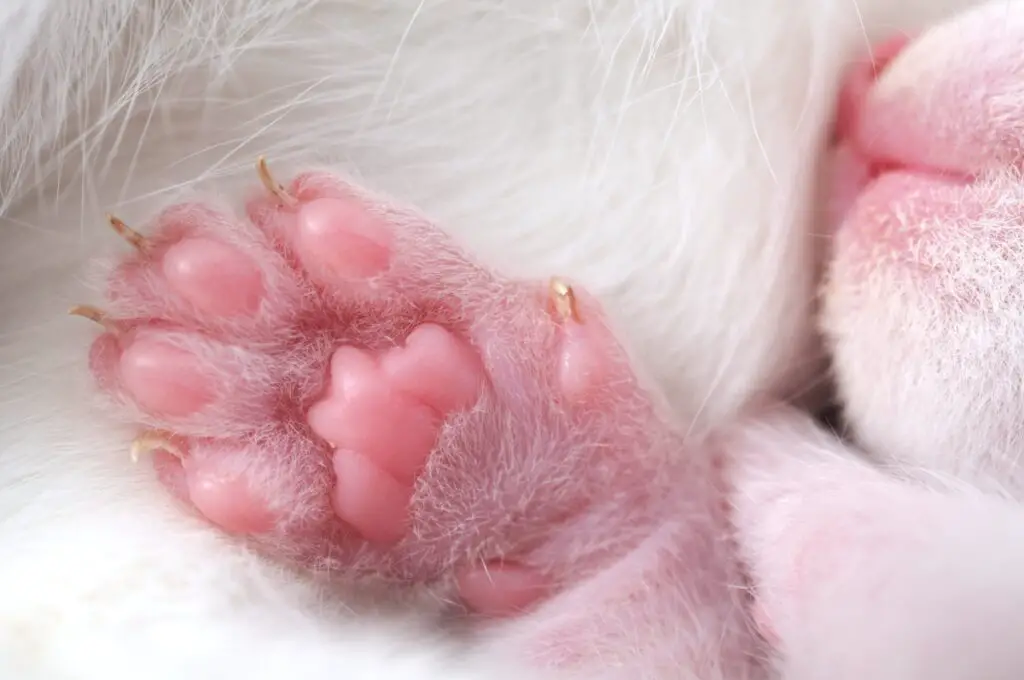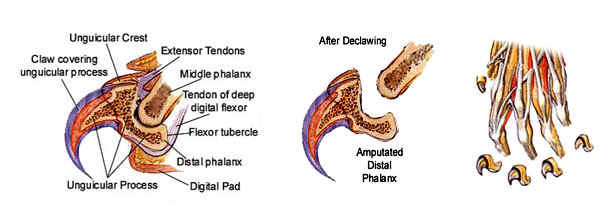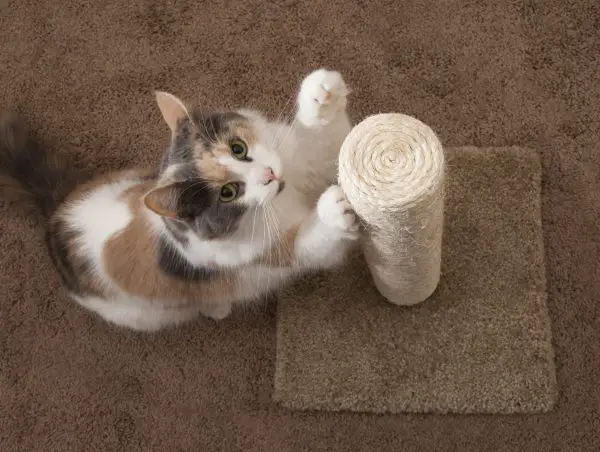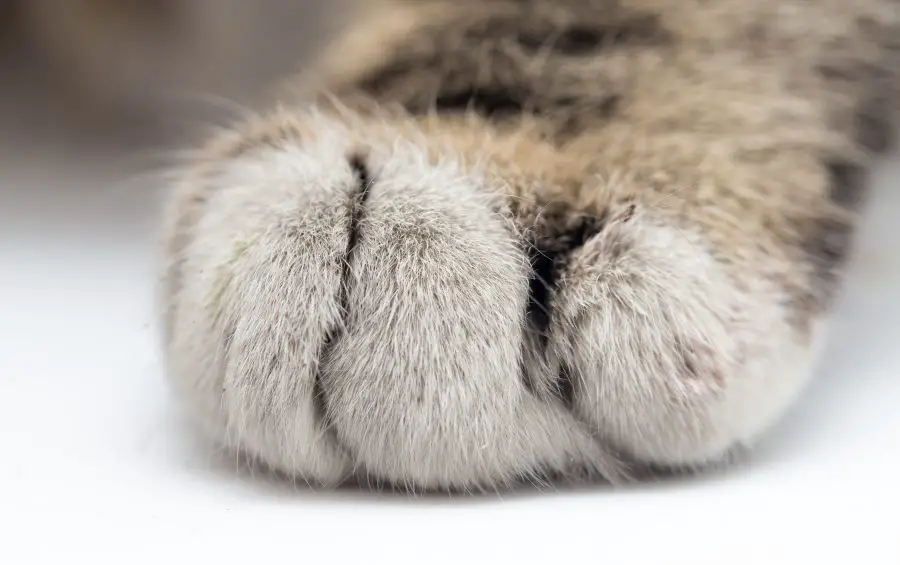The fate of cat’s paws will decided on June 16, 2016.
New Yorkers have the opportunity to make history for cats. A bill has been put forth in the New York State Legislature proposing that declawing be banned state-wide. The bill (A1297 /S5084 in New York State) has support from almost everyone – except for the New York State Veterinary Medical Association (NYSVMS). Why would the NYSVMS oppose this cat-friendly legislation? It might have something to do with money or to avoid upsetting the status quo…
Declawing is a Profitable Business for some Veterinarians
Approximately 14.4 million cats undergo onychectomy each year; and approximately 45% of owned cats are declawed (cliniciansbrief.com, 2011). That’s because veterinarians have had a misinformed idea for years that declawing is a necessary evil. They often do not bother to educate cat owners about the radical nature of this (mutilating) surgery or its humane alternatives. Vets can make over $1000/hour declawing cats (Pulse, 11/2009).
Some vets are conflicted. Often, young vets are emotionally blackmailed by veterinary practice owners who insist on declawing or senior level vets who are forcing them into the antiquated way that their practice has always done things. These vets will be happy when declawing is illegal.
“[Veterinarians] are not behavior experts, they are rushed surgeons. And it’s in their best interest to keep the gory details about declawing to themselves.” – Jennifer Conrad, DVM
In the Internet age, with information more readily available than ever, cat owners are becoming more savvy on this issue and rejecting their veterinarian’s proclamation that this procedure is “standard.” In 2014, the American Veterinary Medical Association (AVMA) amended their declaw policy stating that declawing, or onychectomy, is a major procedure and should only be considered as an absolute last resort. Unfortunately for the cats, the AVMA doesn’t regulate veterinarians and these vets continue to declaw 25% of American cats. Surely all of these cats, numbering in the millions, aren’t falling into the “last resort” category that the AVMA tepidly ascribes to.
“How can all humane alternatives have been tried if 76% of declaws were performed on kittens fewer than 8 months old?” – Jennifer Conrad, DVM

Kittens are often declawed at 8 weeks with no opportunity for training. Training a cat to use a scratching post is very easy. Cats love to stretch and scratch their claws on them.
What is Declawing?
Declawing is the amputation of a cat’s toe bones. It is not just a fancy manicure that only a veterinarian can do. It is ranked as one of the most painful surgeries in all of veterinary medicine.

Declaw procedure is amputation
Laser declawing is not a humane manner to declaw either. According to double blind studies, laser declawing is just as inhumane as traditional declawing methods (cliniciansbrief.com, 2011). Many vets will market laser declaw as more humane in order to recoup their large investment in laser declawing equipment. A laser costs $35,000 and that gives the owner of the veterinary practice a strong reason to promote declawing.
Declawing Banned in Dozens of Countries
Many countries already ban or eschewed declawing…but not the USA or Canada (at least not yet)
Much of the world has either outright banned the practice or declared it as extremely inhumane and only to be performed in extreme situations. Unfortunately, the USA and Canada have not joined these other countries that consider declawing unethical, unnecessary and cruel.
England Scotland Wales
Italy Austria Switzerland
Norway Sweden Ireland
Denmark Finland Slovenia
Brazil Australia New Zealand
Serbia Montenegro Macedonia
Slovenia France Germany
Bosnia Malta Netherlands
Northern Ireland Portugal Belgium
Israel
Declawing Contributes to Pet Homelessness
One blatant rationalization vets use to assuage their guilty consciences is that declawing keeps cats in their homes. This isn’t true. Cats that are declawed become homeless more often than cats that keep their claws. That’s because cats who have been declawed exhibit more behavior problems than cats with claws. Why? The declaw surgery is extremely invasive and painful. The cat’s toes are amputated at the first knuckle causing permanent disfigurement and in many cases, long-term pain.
Gary Patronek, VMD, PhD, conducted a study using multivariate statistical analysis, and found that declawed cats were at an increased risk of relinquishment to animal shelters and that among relinquished cats, 52.4% of declawed cats were reported to exhibit litter box avoidance, compared to 29.1% of non-declawed cats.
Advocates of the declaw ban postulate that declawed cats become averse to using the litter box because they associate the digging with the pain and/or discomfort. Statistics from all of the California city shelters with declaw bans support this hypothesis. All shelters report that fewer cats were dumped in the five years after the bans began compared to the five years before the bans. A significant number! In Los Angeles it was over 40% fewer cats! Do declaw bans save lives? Seems like it.
But Declawed Cats are Safer for the Elderly, Sick and Young, right?
Not necessarily. Another rationalization used by proponents of declawing is that it makes a cat a more suitable pet for the elderly, young, diabetic, or HIV positive person. The Centers for Disease Control (and Prevention) (CDC) is widely considered the preeminent authority on public health in our country, particularly infectious diseases.
The CDC website clearly gives the following information for immunocompromised cat owners: “If you’re HIV-positive, are being treated for cancer, or have any other condition that might disrupt your immune system, you can keep your cat. Just keep the following points in mind:
- Keep the cat indoors.
- Avoid rough play with cats and situations in which scratches are likely.
- Declawing is not recommended.
- Promptly wash any cat scratches or bites with soap and water.”
- Avoid contact with fleas.
- Treat the cat with a flea control product recommended by your veterinarian.
- It’s not necessary to test or treat a healthy cat for Bartonella.
- If you are getting a cat, make sure it’s at least a year old, in good health, and free of fleas. Avoid stray cats and cats with flea infestations.
Source: (cdc.gov/bartonella/cat-scratch)
The Bottom Line on Declawing Cats…
The Catnip Times is against declawing as is anyone who knows the truth about declawing. If a cat owner cares more about their furniture than their cat’s happiness, health and well-being, we don’t think the cat owner should own cats. Dog owners often complain that their dogs chew on everything – but no one has ever suggested removing the teeth of a dog that destructively chews. Instead, we strive to modify behavior and redirect it toward more productive behavior.
Scratching is a natural cat behavior. Today, there are so many ways to channel your cat’s scratching – from scratching posts, to soft paws
to sticky tape
– cat owners have many other humane options. Check out CatManToo on YouTube for easy training tips.

A cat scratching post is a great way to redirect cat’s that scratch in a positive way – and they work!
What’s Next?
If you’re from New York – sign the petition to support the ban on declawing in New York State.
If you know someone from New York, send them this article and the petition. Educate them on the cruel nature of declawing and ask them to help the cats of New York and give hope to cats in the US and Canada.
Don’t procrastinate. This legislation will be decided by June 16, 2016
About The Paw Project
The Paw Project is the world’s largest organization dedicated to abolishing declawing. The group has been successful at banning declawing in a significant portion of California. Dr. Jennifer Conrad is a veterinarian and founder of The Paw Project.
